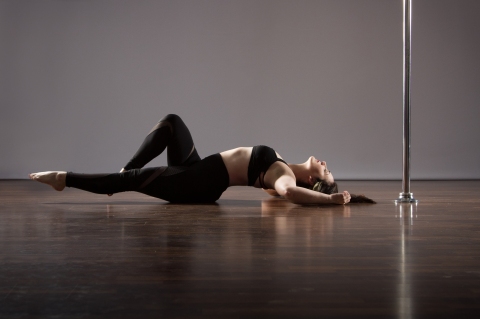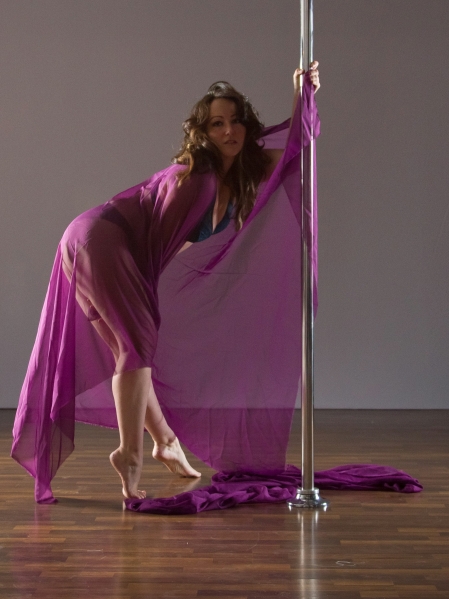Blog Archives
Is Freedance Suited for Competitions?
I spent last weekend judging PSO’s Pacific Pole Championship, as I do every year. I genuinely enjoy judging – I love seeing what people bring to the stage, but more than that, I really enjoy the process of providing feedback. I hope what I tell people is constructive (and that nobody thinks I’m a bitch for giving them suggestions of things to improve) – and I look at it as an opportunity to learn how to better coach our competitors as well. An example of this: the scoresheets for 2019 are different than in previous years, so we judged on a new criteria, and it completely changed how I awarded points…and it will change how I coach people in the future.
Another change for 2019 was the reintroduction of the Freedance category. I remember this being around when I first completed in 2012 – at that time, competitors were assigned a song and able to hear it a few times right before they went on stage. For this year, the competitors did not hear their music until they stepped on stage.
I was part of the judging panel for both of the Freedance categories at PPC, which were split into Junior/Senior and Master/Grand Master – since this is considered an experimental category, there were no levels assigned, only age brackets. This was also how things ran when they first introduced the Low Flow category, too.

Freedance photo by Alloy Images.
I’m super grateful to have been a part of the judging process for this, but it got me thinking quite a bit about Freedance/Freestyle and the misperceptions of it within the pole community.
I teach Freedance weekly, and I have for around 4 years. Before that, I was invested in it as a student. If there was any genre within pole that feels like mine, it’s this one. I’m deeply connected to it in a way that makes me excited to share it, but also protective of what I believe it to be.
To me, freestyle is about connection: to an audience, a story, a character/being, an emotion, or another prompt of some kind – it’s driven by a focus on that parameter, and that’s what I look for in the technique: are you connected to or focused on something that is larger than tricks?
I would venture to guess that this is NOT what most people would look for when watching a Freedance Competition Category, largely due to a lack of understanding of Freedance Technique (including that it even exists as a thing).
My feeling on this is obviously colored by the fact that I teach freestyle technique: there IS a technique to it, but it is not the same type of technique one would see in other categories, and very few people seem to understand it because freestyle is so rarely taught.
What I am looking for in technique for freestyle is different from what a non-freestyler would look for…I don’t care so much about trick passes, for example. I’ll forgive cleanliness to a certain degree, in favor of other elements I consider more important for the genre. I don’t give a shit if you go up the pole at all – in fact, in my class, the majority of students stay at the base (I can count on one hand the number of students I have had who have gone up the pole with any regularity). Going up the pole doesn’t show me anything about your Freedance Technique unless you do the work to incorporate it into your aerial work.

Photo a fabric freedance by Alloy Images.
Do I feel like Freedance has a place in competitions? Yes. I do. I’m actually really excited about the idea of it, because it means that there’s a chance that Freedance will a) become more widely understood, accepted, and even celebrated and b) more people might be willing to try it.
That said: I think there’s an opportunity to educate pole competitors on how to work within the genre for competition, as well as for judges to learn what to look for while judging. PSO stated that the category was judged on a technical scorecard because it’s still experimental, and the artistic scorecard includes elements that would be difficult to apply (which is true, from my experience) – I’m curious to see if they develop a new scoring system for this category, if they continue to include it – or if they provide any other training/education around the concepts of Freestyle Technique.
Do you have thoughts on Freedance in competition? Comment below!
A couple of videos for you
Just a quick post with a couple of videos for you.
First up, a performance from Sarah Scott that blows my mind – she’s SO strong. Like, beast strong. It’s AWESOME. I met her briefly at PoleCon 2012, so it’s neat to finally check out her performance style. She’s got a couple of aerial and shoulder mount sequences that are incredible, and I like some of her other moves – she’s got a shoulder stand floor move that I’d like to breakdown, and I actually brought one of her pole sequences into class late last year – it’s a combo from an odd spin into a series of grip poses, then some planks from the floor to pole. (I’m not explaining it well, but I have no idea what any name of any trick in it would be.)
And, then there’s little ol’ me, trying my best to learn a new sequence at my last Lyra class. I’ve been struggling a bit the last few weeks – more tired than usual, and it could either be that I’ve been sick (especially the last two weeks) and run down, or it could be that the difficulty of the tricks has finally caught up to where my strength level is. Not sure yet. This week was tough on me, though – the sick factor really took more out of me than I realized (which is not a fun thing to discover when you’re in a single knee hang). I’m struggling a bit in this video, but Leigh is walking me through each new move patiently, since I didn’t get a chance to string them together before this moment – I’d tried one of the tricks twice successfully, one of them once successfully, and one of them once rather unsuccessfully, so the entire thing was pretty new to me, except for the knee hang portion and the mermaid. The one I’m working with near the end is called The Dislocater (not sure if that’s just Leigh’s name for it), and it lands into two pretty tricks, but getting into it is awkward as hell (as you can see). Hoping to have it down a bit better next week!
I’m back in class tomorrow and Thursday – hoping my body doesn’t put up too much of a fight – and am tentatively scheduled to finally head out with a pole friend to play with my Most-Fit suspension strap. Between being so sick, it being my busy season with my pet sitting business, and the weather acting up every time I made plans to go outside to use it, I haven’t been able to test it properly yet. Excuse, excuses, I know. 🙂
Still no word on whether I’ve got a spot in the PPC 2013 showcase, but I do think I have my song/theme if I get in! Also, we’re working on getting new merchandise ready for Poleitical Clothing – hope to launch it at Pole Show LA, if we end up getting a vendor booth. 🙂
Pole Art 2012
I missed the live stream of Pole Art 2012, courtesy of Pole Ranking (was at a wedding that day), but THANK GOD they have the videos up on their blog!! For a comprehensive video listing of all of the performances, head over to their site – there is written commentary/breakdown of each performance, too.
I am going to embed the top two female competitors – Oona, because she’s awesome and took first place, and Natasha, because she’s so beautiful and came in as the runner up! I love both of their performances – Oona’s athleticism and musicality always blows me away, and I loved that Natasha had a different vibe to what she did in this performance (compared to some of the other performances I have seen).
Oh, and those toe points to flexes on Natasha? LOVE. She nails those little flourishes like nobody else.
The full list of winners:
Female Winner: Oona Kivelä (for the 3rd time!)
Female Runner up: Natasha Wang
Male Winner: Saulo Sarmiento (the backward jump into the shoulder mount he does at 1:02?! Holy. Crap.)
Male Runner ups: tie between Evgeny Greshylov and Steven Retchless

